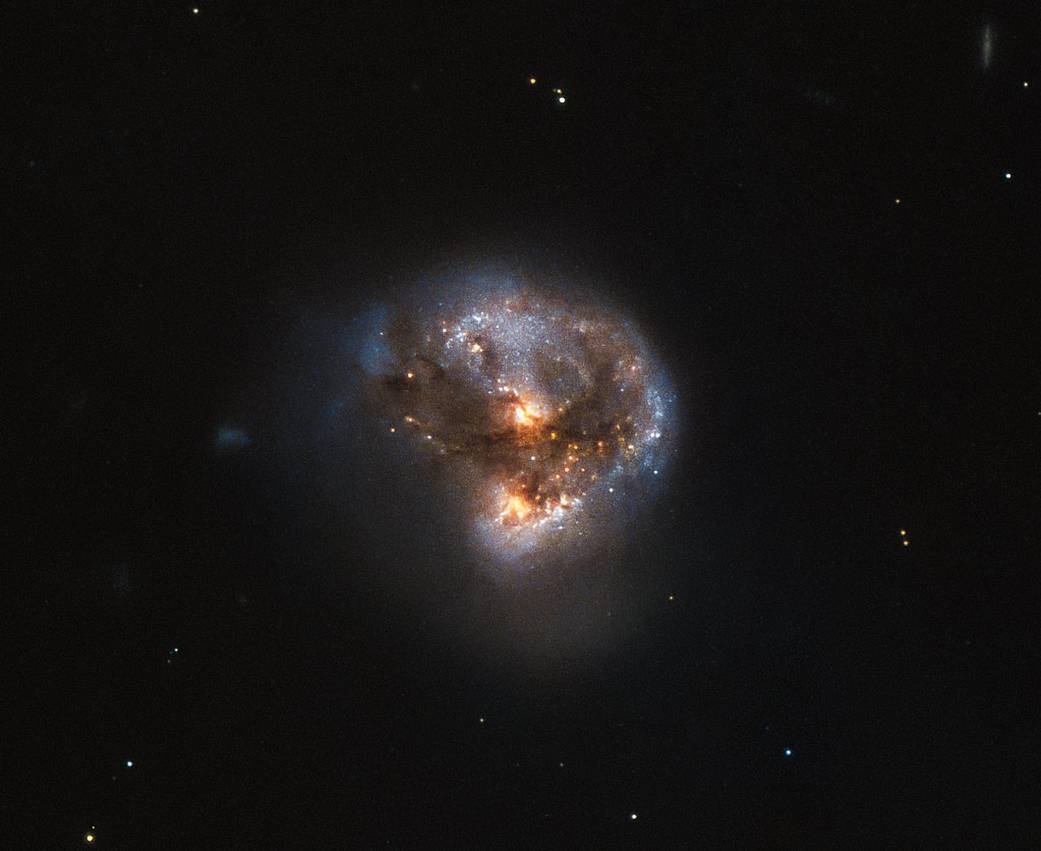Hubble Space Telescope, which is the joint space venture of NASA and ESA has adieu 2016 by beaming back some stunning images of Cosmic Megamaser to the earth. The spacecraft which was launched into the lower orbit of earth 1990 has transmitted millions of breathtaking snaps of different space phenomenon previously. But this time, the largest manmade telescope has beamed back the pictures of such a galaxy which hosts galaxy a mysterious cosmic megamaser.
The galaxy found in Hubble’s latest set of pictures is named as “IRAS 16399-0937”, and it is situated 370 million light-years away from Earth. The new galaxy doesn’t look like the regular galaxies including neat spirals and elliptical because it is not one of them. It is something exciting and exceptional, as it hosts a cosmic Megamaser – a galaxy that is emitting intense microwave instead of lights like usual galaxies.
This NASA and ESA combined project Hubble Space Telescope image disproved the energetic nature of the galaxy and, instead, it delivered an image which has painted the galaxy as a stunning and peaceful extraterrestrial rosebud. The image comprises the detailed observation recorded across various wavelengths by two of the instruments Hubble. This picture of IRAS 16399-0937 clicked by the Advanced Camera for Surveys and NearInfrared Camera and Multi-Object Spectrometer of Hubble, is said to be the most comprehensive images of the galaxy yet. The image beamed back by the largest space telescope is revealing a lot about the deep space, its galactic-scale turmoil, and their regular activities. The new galaxy IRAS 16399-0937, rather than having one core, has two, which is exceptional.
Both cores named as IRAS-16399N and IRAS-16399S of the new galaxy are positioned around 11,000 light-years aside from one another. While the IRAS-16399N is located in the northern core of the galaxy, the IRAS-16399S is situated at the south core. However, despite the distance, both cores are heading towards integration, intermingling in a huge cloud packed with gas and dust.
While the southern core is extremely dynamic and found to have a starburst region cracking out new stars at a remarkable pace, the northern core is truly opposite of it. The Northern core has a region of dimly-ionized neutral gasses and also hosts a massive black hole which mass is 100 million times bigger than the mass of the sun.
